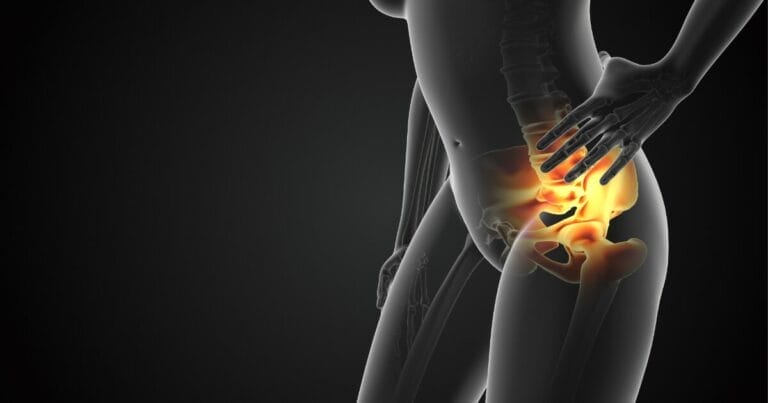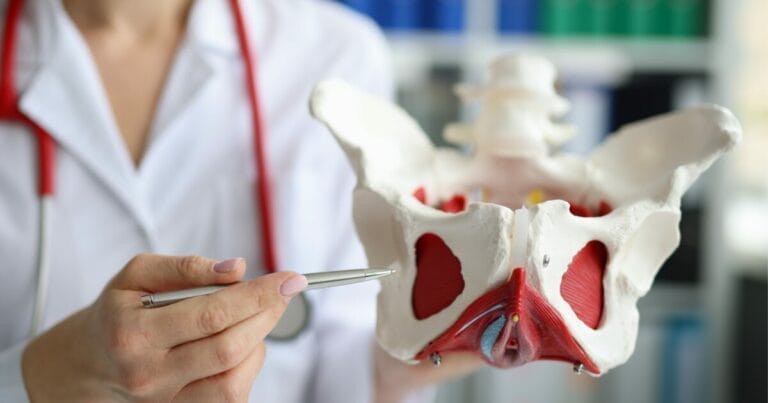Soothing IC Pain: A Guide to Integrated Treatments
Interstitial cystitis (IC), also known as painful bladder syndrome, presents a complex challenge to both patients and healthcare professionals. It is characterized by a spectrum of symptoms including pelvic pain, urinary frequency, and urgency that can significantly diminish the quality of life. The multifaceted nature of this chronic condition necessitates a comprehensive, integrated treatment approach…

Interstitial cystitis (IC), also known as painful bladder syndrome, presents a complex challenge to both patients and healthcare professionals. It is characterized by a spectrum of symptoms including pelvic pain, urinary frequency, and urgency that can significantly diminish the quality of life.
The multifaceted nature of this chronic condition necessitates a comprehensive, integrated treatment approach that addresses both the physiological and psychological aspects. In this guide, we will explore a variety of evidence-based interventions ranging from pelvic floor therapy and dietary modifications to stress management techniques and targeted physical therapy, each offering a potential piece of the puzzle in alleviating the discomfort associated with IC.
As the nuances of these treatments are unpacked, it becomes apparent that a tailored, patient-centric plan is not only desirable but essential. The ensuing discussion will illuminate how these varied therapies can be synergistically combined to create a more effective management strategy, potentially leading to improved patient outcomes and a better understanding of interstitial cystitis as a whole.
Key Takeaways
Interstitial cystitis (IC), often referred to as painful bladder syndrome, poses a real challenge for those affected and their healthcare providers. This condition is known for a range of symptoms like pelvic pain, frequent urination, and a strong urge to go, all of which can greatly lower a person’s quality of life.
To tackle this chronic issue effectively, a well-rounded treatment plan that addresses both physical and mental health is key. In this guide, we’ll look at various proven methods, like pelvic floor exercises, changes in diet, stress reduction techniques, and specialized physical therapy. Each of these can play a role in lessening IC discomfort.
It becomes clear that personalized care is not just preferable but necessary. We’ll see how combining these different treatments can lead to better results for patients and a deeper understanding of IC.
For those struggling with IC, finding relief is important. As we delve into the details of these treatments, we see the importance of a treatment plan that’s made just for you. This conversation will show how blending these therapies can be more effective, possibly leading to better patient experiences and a clearer picture of IC as a condition.
In conclusion, a personalized, holistic approach is essential for improving the lives of those with IC. By exploring a range of treatments, patients can find their unique path to managing their symptoms and regaining their quality of life.
Understanding Interstitial Cystitis
Interstitial cystitis (IC), often known as painful bladder syndrome, is a chronic condition that leads to consistent bladder discomfort, pressure, and sometimes pain in the pelvic area. People with IC experience a range of symptoms like a strong need to urinate, frequent urination, and waking up at night to go to the bathroom. The exact causes of IC are still unclear, but it’s known that bladder inflammation plays a key role, and there might also be a link to nerve sensitivity and autoimmune responses.
To diagnose IC, doctors focus on the symptoms and rule out other urinary tract problems. Because IC is a complex condition, the treatments have to be diverse and integrated. They aim to manage the ongoing bladder inflammation and improve the symptoms to make life better for those affected.
When you’re trying to understand IC, it’s important to remember that it’s not a simple condition, and there’s no one-size-fits-all solution. It’s crucial to work closely with healthcare providers to find the most effective management strategies for your specific situation. As we explore the realm of IC together, remember that ongoing research may soon unlock new ways to treat and manage this condition.
Pelvic Floor Therapy Role
Pelvic floor therapy is a critical treatment for those suffering from interstitial cystitis. It focuses on the muscle support around the bladder and pelvic area to help ease pain. The therapy involves special techniques to improve muscle coordination, reduce muscle tightness, and help the pelvic muscles relax. These methods are tailored for each person, using biofeedback, hands-on therapy, and specific exercises that have been proven to help relieve symptoms.
It’s important to clear up any misunderstandings about pelvic floor therapy. It’s not just an extra treatment; it’s a main form of therapy that requires skilled practitioners. Both healthcare providers and patients need to recognize its value to get the best results.
In today’s healthcare landscape, pelvic floor therapy stands out as an effective way to manage pelvic pain. It’s designed to offer relief and improve quality of life. As we continue to learn and adapt in the ever-evolving field of medicine, treatments like this show how targeted therapy can make a real difference in people’s lives.
Remember that this therapy can be a game-changer for many. By embracing this solution, patients can start on a path to recovery and better manage their condition. The key is to ensure that everyone involved understands the process and is committed to the treatment plan for the best possible outcomes.
Dietary Modifications for IC
Diet and Interstitial Cystitis: A Strategy for Symptom Management
Current research indicates that what you eat and drink can have a big impact on interstitial cystitis (IC) symptoms. Finding out which specific foods trigger your symptoms is key to managing this condition. To handle IC effectively, you’ll need a diet plan that’s customized for your unique reactions to different foods. Health professionals can guide you through this journey, highlighting the need for systematically removing foods from your diet to pinpoint those that worsen your IC symptoms.
Firstly, it is essential to understand that not everyone with IC will react to the same foods. This is why a personalized diet plan is so important. Health providers can help you discover which foods to avoid through a structured elimination diet. By removing suspect foods and then reintroducing them one by one, it’s possible to identify the culprits behind your discomfort.
Secondly, as you embark on this process, remember to keep a detailed food diary. This diary will be an invaluable tool in tracking your symptoms and the foods you consume. By doing so, you can unveil patterns that may lead to breakthroughs in managing your IC.
In conclusion, managing IC with diet is not a one-size-fits-all solution. It requires patience, attention to detail, and guidance from knowledgeable clinicians. With their help, you can enhance your quality of life by controlling your symptoms more effectively.
Identifying Trigger Foods
Many individuals with interstitial cystitis find that certain dietary modifications can play a crucial role in managing symptoms and reducing flare-ups. Specifically, identifying and eliminating trigger foods is an effective approach. Utilizing food journaling and symptom tracking is a methodological approach that allows patients to discern which dietary constituents exacerbate their condition. This meticulous process involves recording daily food and beverage intake alongside symptom severity, leading to the identification of potential irritants.
Evidence-based research suggests that common culprits often include acidic foods, caffeine, artificial sweeteners, and alcohol. By systematically eliminating these items and observing any resultant attenuation of symptoms, patients can tailor a personalized diet that mitigates the discomfort associated with interstitial cystitis. This personalized approach enhances their quality of life.
IC-Friendly Diet Tips
Understanding how different foods affect interstitial cystitis (IC) is key to managing its symptoms. Staying hydrated is one of the most important things you can do because it helps to dilute your urine, which may reduce bladder irritation. It’s best to drink water throughout the day and to stay away from bladder irritants like caffeinated beverages and alcohol.
When considering dietary changes for IC, supplements might also play a role. For example, calcium glycerophosphate could decrease the acidity in your diet, which might help ease bladder pain. But remember, it’s essential to talk to a doctor before adding any supplements to your routine to make sure they’re safe and won’t interfere with other treatments you’re using.
Stress Management Techniques
People with interstitial cystitis (IC) can find great relief by using stress management techniques as part of their care. Mindfulness meditation helps with staying focused on the present and accepting it without judgment, which can lower stress levels that might make IC worse. Relaxation methods like progressive muscle relaxation and deep breathing can calm down the body’s stress responses, which tend to be stronger in those with IC. Regular practice of these techniques can ease tension in the pelvic floor muscles, which often causes discomfort for IC sufferers.
Healthcare providers should think about adding these stress-reducing strategies to their comprehensive treatment plans for IC. There’s growing evidence suggesting a link between stress and the intensity of IC symptoms, highlighting the value of these approaches.
Remember that managing stress isn’t just good for IC; it’s beneficial for overall health. By embarking on a routine that includes these calming practices, patients might not only manage their IC better but also improve their overall well-being.
Moreover, it’s essential for healthcare professionals to stay informed about the latest research and integrate new, evidence-based non-drug strategies to offer the best care for IC patients.
Physical Therapy Interventions
Physical therapy plays a crucial role in the comprehensive treatment of interstitial cystitis (IC), a condition marked by chronic bladder pain. By focusing on the pelvic floor, therapists can help ease the muscle tightness that often triggers IC symptoms, offering relief from pain and lessening the urgency to urinate. Additionally, combining these exercises with strategies for managing pain and incorporating stretches can improve how well patients function day to day and boost their quality of life.
Firstly, it’s essential to understand that IC pain can be intense, and managing it requires a well-rounded approach. Targeted pelvic floor exercises are designed to relax muscles that are too tense, which is a common issue for those with IC. This relaxation can lead to significant relief.
In addition to exercises, pain management techniques are key. These might include methods like heat therapy or guided relaxation, which can help control the chronic pain that comes with IC. By using these techniques, patients can find some solace and see improvements in their daily activities.
Moreover, it’s important to incorporate stretching into the treatment plan. Stretching helps keep the muscles flexible and can prevent further discomfort. When patients maintain a regular routine that includes these stretches, they may find that their pelvic pain decreases and their ability to move around improves.
Pelvic Floor Exercises
Pelvic floor exercises, also known as Kegel exercises, play a crucial role in physical therapy for easing the pain associated with interstitial cystitis (IC). These exercises aim to build strength in the muscles that support the bladder and urethra, which can reduce pain and improve bladder control. When combined with bladder retraining methods, these exercises can lead to better urinary function.
- Strengthening the Pelvic Floor Muscles:
- A systematic approach to increasing muscle strength
- Supervision by a trained physical therapist
- May use biofeedback for guidance
- Retraining the Bladder:
- Planning bathroom visits to expand bladder capacity
- Strategies to control sudden urges
- Slowly increasing the time between bathroom visits
- Applying Biofeedback:
- Immediate feedback to confirm proper muscle use
- Use of visual or sound signals to increase muscle awareness
- An approach based on data to monitor improvements
When these techniques are applied correctly, they offer a comprehensive strategy for managing IC pain. It’s important for patients to stick with the program and consistently attend therapy to see the best results.
In the realm of pelvic health, Kegel exercises are a treasure trove for those looking to find solace from IC pain. To ensure you’re performing these exercises correctly, it’s essential to work with a specialized physical therapist. They can guide you through a tailored program and use biofeedback to enhance your awareness of muscle engagement.
If you’re starting this journey, remember that it’s not just about the exercises—it’s about integrating them into a broader plan for bladder health. The combination of pelvic floor muscle training and bladder retraining can unlock significant improvements in your condition.
Stay committed, and you’ll likely notice a difference in your symptoms. And if you’re unsure about where to start, we’ve got you covered with expert advice and support.
Pain Management Techniques
In managing the pain that comes with interstitial cystitis, it is crucial to have a comprehensive approach to physical therapy. Physical therapists who specialize in pelvic pain are trailblazers, using non-opioid methods to help patients. This is important because it lowers the chance of becoming dependent on strong painkillers and avoids their side effects.
One effective technique is heat therapy. It relaxes muscles and improves blood flow, providing relief from the intense pain of IC. Heat therapy is used to calm muscle spasms and aid recovery, often bringing significant comfort to the patient. These specialized skills enable healthcare professionals to offer a holistic, patient-focused service that tackles the complex nature of interstitial cystitis pain.
Remember that while strengthening the pelvic floor is a starting point, exploring additional therapies is equally important for a well-rounded treatment plan.
Therapeutic Stretching Routines
Therapeutic stretching routines, tailored to alleviate the discomfort associated with interstitial cystitis, are a cornerstone of physical therapy interventions, employing evidence-based techniques to enhance mobility and reduce pain. These regimes are meticulously designed to promote muscle relaxation and flexibility improvement, key components in managing the chronic pain and discomfort of IC.
- Customized Stretching Programs
- Patient-specific assessment for targeted muscle groups
- Progressive stretching to gently extend range of motion
- Integration with overall pain management plans
- Muscle Relaxation Techniques
- Breathing exercises to facilitate relaxation
- Soft tissue mobilization to release muscle tension
- Autogenic relaxation, focusing on self-induced calmness
- Flexibility Improvement Strategies
- Dynamic stretches to improve elasticity of muscles and connective tissue
- PNF (Proprioceptive Neuromuscular Facilitation) to enhance muscular function and flexibility
- Education on maintaining flexibility through daily activities
These structured protocols are administered by healthcare professionals with specialized knowledge in pelvic floor dysfunction, ensuring a high degree of clinical expertise in the management of IC-related symptoms.
Pain Relief Strategies
Various effective strategies for pain relief in interstitial cystitis (IC) patients have emerged, giving them a range of options for better managing their discomfort. It is crucial for healthcare professionals to carefully assess all medications patients are already taking because some can make IC worse, while others can help ease symptoms. This careful review should involve professionals well-versed in both the effects of medications and the specifics of IC to ensure that the treatment plan is safe and effective.
Acupuncture has gained recognition as a helpful addition to IC pain treatment. Studies indicate that it can reduce pelvic pain and the feeling of needing to urinate urgently by affecting the nervous system and reducing inflammation. To see the best results, trained specialists in chronic urological pain should include acupuncture as part of a comprehensive pain management strategy.
Frequently Asked Questions
Can Interstitial Cystitis Lead to Other Health Complications or Conditions if Left Untreated?
If left unattended, interstitial cystitis can progress, potentially disrupting kidney function and negatively impacting mental health. The constant search for comfort might lead to additional issues, highlighting the need for a tailored approach grounded in robust research for individuals aiming to effectively manage this ailment.
Reflecting on the present scenario, it is crucial to understand that untreated interstitial cystitis is more than a mere inconvenience. It is a condition that can significantly impair one’s quality of life. The continuous discomfort can affect the kidneys, an essential organ for filtering waste from your blood, and can also take a toll on an individual’s mental well-being due to the persistent pain and discomfort.
Effective management of interstitial cystitis involves more than just addressing the symptoms. It requires a comprehensive plan that not only alleviates discomfort but also prevents potential complications. This is where evidence-based treatments come into play, offering a beacon of hope for those affected by the condition.
Remember that the journey towards managing interstitial cystitis is not a solitary one. Healthcare providers are there to guide and support patients through this challenging path. By delving into the latest research and treatments available, patients can discover new ways to improve their condition and overall health.
Are There Any Alternative or Complementary MedICines, Such as Herbal Remedies or Homeopathy, That Have Shown Effectiveness for IC Patients?
Research exploring herbal remedies and homeopathy for those suffering from interstitial cystitis has produced mixed outcomes. Some herbal treatments seem promising, but it’s crucial to have solid, evidence-based studies to confirm the effectiveness of these alternative approaches.
To delve into this topic, remember that the world of alternative medicine is vast and ever-evolving. In light of recent studies, we understand that finding relief for interstitial cystitis can be a daunting task, but exploring these options is important. While some herbal remedies have been found to provide solace for patients, the scientific community continues to emphasize the need for rigorous research to elevate these treatments from anecdotal success to medically endorsed therapies.
It is essential for those interested in complementary medicines to not only embrace potential new treatments but also to be well-informed about their efficacy. Robust research is the beacon that guides us through the sea of available information, helping to debunk myths and demystify the realm of alternative medicine.
How Does Interstitial Cystitis Affect Sexual Health and Intimacy, and What Approaches Can Help Manage These Challenges?
Interstitial cystitis often disrupts sexual health, leading to the need for individuals to adjust their sexual habits and improve communication with their partners. It’s important for those affected to work with healthcare professionals to create personalized plans that reduce pain and improve closeness with their partners, thereby positively influencing their sexual life.
Firstly, it is important to understand that interstitial cystitis can cause pain and discomfort during sexual activity, which can strain intimacy. To manage these issues, open and honest communication with your partner is key. Discussing what feels good and what doesn’t can help you both navigate this challenge together.
Secondly, for some, seeking expert advice may be beneficial. Healthcare professionals can offer guidance on how to minimize discomfort during sex, suggesting different positions or activities that may be more comfortable. This can empower couples to maintain a fulfilling sexual relationship, despite the challenges posed by interstitial cystitis.
Remember that exploring non-sexual forms of intimacy can also be valuable. Spending quality time together, engaging in shared hobbies, or simply holding hands can foster closeness without causing discomfort.
In conclusion, while interstitial cystitis can affect sexual health, there are ways to manage its impact. Through open communication, expert advice, and exploring alternative forms of intimacy, couples can find solace and maintain a strong connection.
Custom Quote: “Love finds a way, even through the challenges of interstitial cystitis. Together, by understanding and adapting, intimacy can flourish.”
What Is the Latest Research on the Potential Genetic or Autoimmune Causes of Interstitial Cystitis?
Recent research has delved into the genetic factors that might predispose someone to interstitial cystitis. It has also explored how an immune system reaction could play a role in the development of this condition. This discovery means that we need to develop new treatments that are based on scientific evidence.
Firstly, it is essential to understand the significance of these findings. Genetic research can help us identify individuals at risk for interstitial cystitis, allowing for earlier intervention. Similarly, understanding the autoimmune aspect can lead to treatments that target the immune system directly.
Moreover, as we continue to navigate the complexities of this condition, it’s clear that an individualized approach to treatment is becoming increasingly necessary. The realm of interstitial cystitis is ever-evolving, and to keep pace, our strategies must be equally adaptive.
Can Interstitial Cystitis Go Into Remission, and if So, What Factors Contribute to Sustained Remission?
Interstitial cystitis (IC) is a condition that can indeed go into remission. Key to this is a well-rounded strategy involving diet changes. Sticking to a personalized treatment plan, crafted with medical insight following an IC diagnosis, is vital for maintaining remission.
Firstly, let’s delve into the role of diet. What you eat can have a significant impact on IC symptoms. By discovering and avoiding foods that trigger flare-ups, patients can find solace and potentially reduce the frequency of their symptoms.
Secondly, it’s important to remember that an effective treatment plan is not one-size-fits-all. Equally important is the continuous support from healthcare professionals, who can help adjust the treatment as needed.
In conclusion, while navigating the complexities of IC, patients who embrace the guidance of experts and adhere to tailored treatment strategies can enhance their chances of achieving and sustaining remission. Moreover, the journey to remission is often a personal one, and what works for one person may not work for another.
Embracing the ever-evolving medical treatments and understanding that remission is possible can offer hope to those living with interstitial cystitis. It is crucial to have open and ongoing conversations with healthcare providers to unlock the best path forward for each individual.







